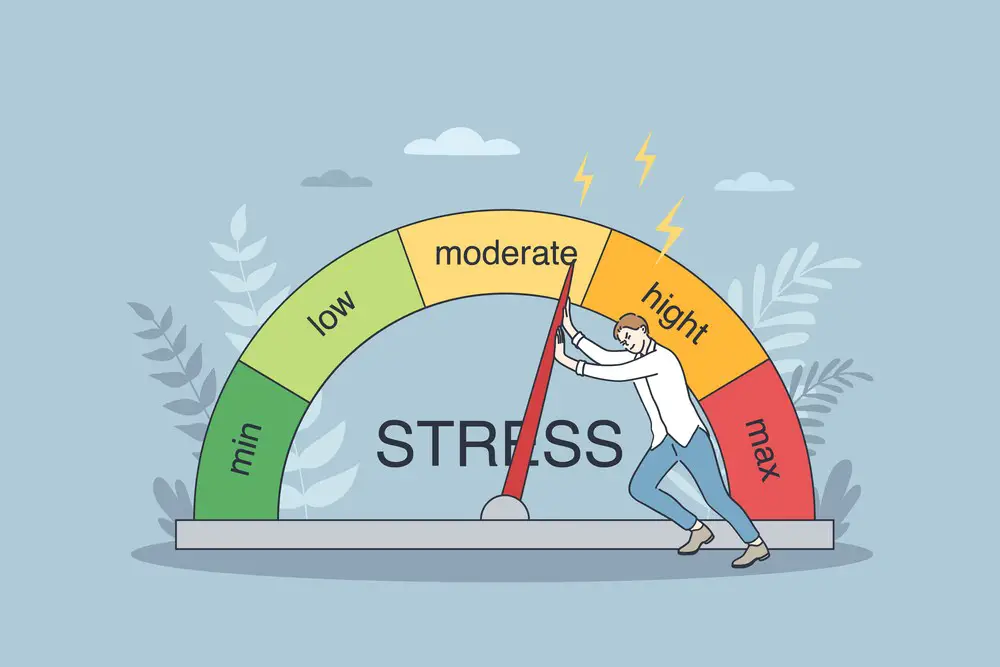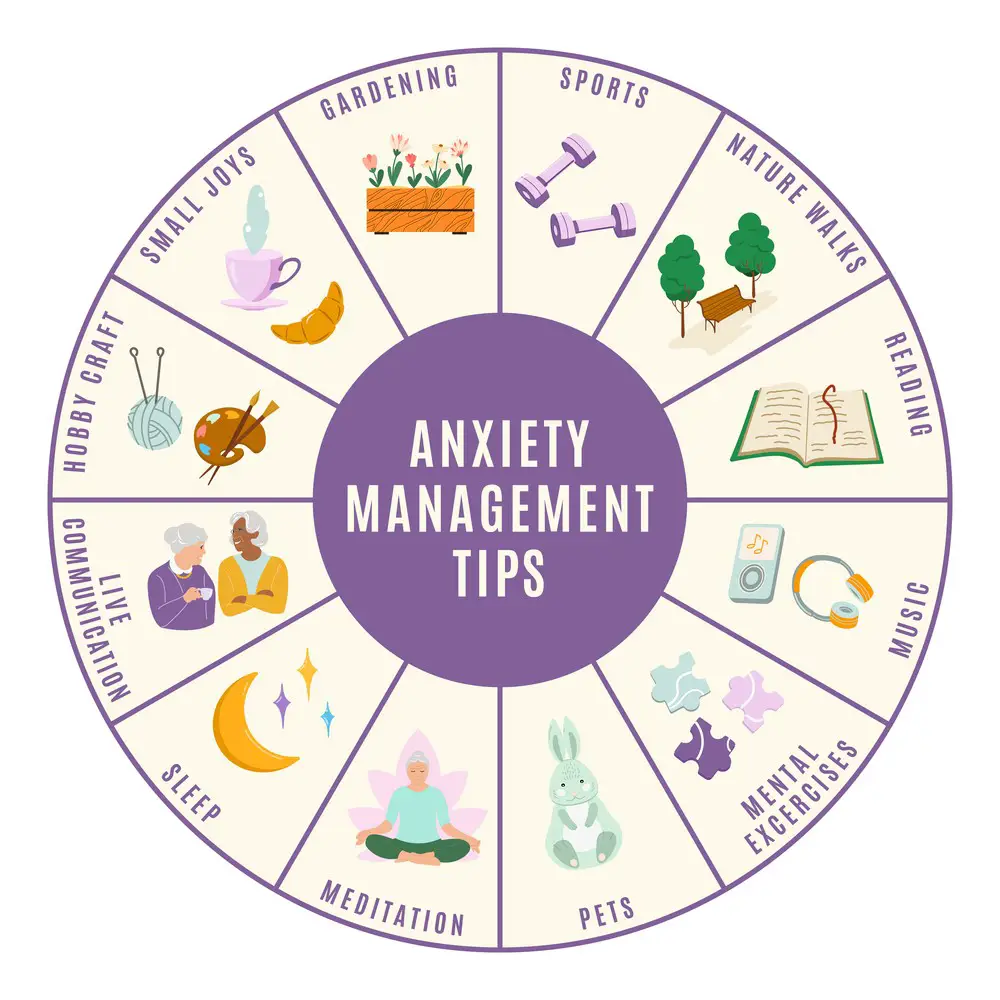As a BetterHelp affiliate, we receive compensation from BetterHelp if you purchase products or services through the links provided
Many people find driving enjoyable, but it can be a source of stress for others. Stressful situations can arise due to traffic, personal issues, time constraints, and fears. Recognizing and addressing the causes of stress while driving is crucial to make the experience more enjoyable, improve driving ability, and ensure safety on the road.
Recognizing the stressors and developing effective stress management strategies to reduce stress while driving is crucial. This can involve managing lifestyle factors, practicing relaxation techniques, and overcoming specific fears related to driving. Moreover, embracing supportive resources and therapies can help drivers feel more confident and competent on the road, ultimately leading to a more enjoyable driving experience and reduced stress levels.
Key Takeaways
- Recognizing and addressing driving stressors is essential for a more enjoyable driving experience.
- Managing lifestyle factors and practicing relaxation techniques can help reduce driving anxiety.
- Utilizing resources and therapies can boost driver confidence and improve overall driving ability.
 Understanding Driving Anxiety
Understanding Driving Anxiety
Driving anxiety affects both men and women and is a common issue many drivers face. It can range from mild nervousness to severe phobias. In some cases, an individual might have a specific phobia related to driving, such as amaxophobia or xenophobia, which can significantly impact their daily life.
Drivers need to recognize their anxiety and take steps to manage it. Dealing with driving-related stress can drastically improve one’s overall driving experience.
Strategies to alleviate anxiety may differ for each individual, and some might require professional help to effectively address more severe driving phobias. Identifying personal triggers and understanding the root cause of the anxiety can be beneficial in finding the most suitable approach to reducing stress while driving.
In conclusion, understanding driving anxiety is crucial for those struggling with fear and stress. Taking the necessary steps to manage these emotions can lead to a safer and more enjoyable driving experience for everyone involved.
Also Read
Driving Anxiety is Ruining My Life: Overcoming Fear Behind the Wheel

Common Stressors While Driving
Driving can be a stressful experience for many people. There are several common stressors that drivers may encounter on the road. Being aware of these stressors can help drivers take steps to reduce their stress while driving.
One major stressor for drivers is traffic. Heavy traffic, especially during rush hour, can cause anxiety and frustration. Cars moving at slow speeds or stopping and starting frequently can lead to impatience and increased stress levels.
Another common source of stress is getting lost or being in an unfamiliar place. Drivers might become anxious and disoriented when they are unsure of their route or destination. This can be particularly challenging when driving in a densely populated area, where streets and landmarks might be difficult to recognize.
Fear of negative experiences or accidents can also contribute to stress while driving. Some drivers may have experienced road rage or other aggressive behaviors from other drivers, which can make them apprehensive about being on the road. Additionally, bad weather, such as rain, snow, or fog, can make driving conditions more difficult and raise stress levels as drivers worry about their safety and the safety of other road users.
Road rage is another stressor that some drivers may encounter. Aggressive driving behaviors, such as tailgating, honking, and making rude gestures, can increase stress and even lead to dangerous situations on the road.
Drivers might face many common stressors while driving, including traffic, getting lost, fear of negative experiences, bad weather, and road rage. Being aware of these stressors and taking steps to mitigate them can help drivers feel more confident, knowledgeable, and clear-headed on the road, ultimately reducing stress behind the wheel.
 How Stress Affects Driving Ability
How Stress Affects Driving Ability
Stress can significantly impact a driver’s ability to react and respond while driving. When experiencing stress, a driver’s reaction time may be reduced, making it difficult for them to respond quickly and effectively in emergencies. Additionally, stressed drivers tend to feel more fatigued, further impairing their reaction times and overall driving performance.
Distractions are often a direct result of driving stress, as drivers can lose focus on the road and become easily sidetracked by external factors. These may include emotional distractions, such as frustration or anger, or cognitive distractions, such as worrying about work or personal issues. Distracted driving is a leading cause of traffic accidents and can result in serious consequences for the driver and others on the road.
Driving stress can also increase the likelihood of making poor decisions while behind the wheel. For instance, stressed drivers may engage in aggressive driving behaviors or take unnecessary risks, such as speeding or tailgating, which can lead to accidents. Moreover, stress might prompt drivers to miss important traffic signals or road signs, potentially leading to improper lane changes or other dangerous maneuvers.
Losing control of one’s vehicle is another possible consequence of driving stress. When drivers become tense and unable to remain calm under pressure, they may overreact to varying road conditions or other unpredictable events. This might result in them losing control of their vehicle, potentially causing collisions or other accidents.
To maintain a safe driving environment and reduce the risks of stress-related accidents, drivers must learn effective stress management techniques and maintain a calm, focused mindset while behind the wheel.
 Managing Lifestyle Factors
Managing Lifestyle Factors
A driver can significantly reduce stress while driving by managing various lifestyle factors. One of these factors is exercise, crucial in improving physical and mental health. Regular exercise helps release endorphins, hormones that act as natural stress reducers. By engaging in a consistent exercise routine, a driver can alleviate stress levels and maintain a more relaxed state of mind while on the road.
In addition to exercise, a driver’s diet also plays a significant role in stress management. Eating nutritious, well-balanced meals can help maintain stable energy levels and mood throughout the day. This includes consuming fruits, vegetables, lean proteins, healthy fats, and whole grains. Furthermore, staying hydrated by drinking water and avoiding excessive caffeine or sugary drinks consumption is essential. A balanced diet and proper hydration can help a driver maintain focus and emotional balance, reducing stress while driving.
Mental health is another crucial factor in managing stress for drivers. Developing relaxation techniques, such as deep breathing exercises or meditation, can help alleviate anxiety and tension during stressful driving situations. These techniques can be practiced before and after driving or during breaks to ensure a calm and focused state of mind.
Chronic stress can have serious consequences on a driver’s well-being and performance. Therefore, it’s essential to identify the sources of stress and find healthy ways to cope with them. Engaging in hobbies, connecting with friends and family, and setting aside time for relaxation can enable a driver to manage chronic stress effectively.
Lastly, adequate sleep is vital in reducing stress and ensuring overall health. A well-rested driver can remain more focused and alert, while sleep-deprived individuals may experience increased irritability, making them more susceptible to stress during driving. Establishing a consistent sleep schedule and creating a conducive sleep environment is highly recommended to ensure sufficient rest.
By managing these lifestyle factors, drivers can reduce stress and maintain a more relaxed, focused, and safe driving experience.
 Relaxation Techniques for Driving Anxiety
Relaxation Techniques for Driving Anxiety
Driving can often be a source of stress for many people. To make the experience more enjoyable and safe, it’s essential to incorporate relaxation techniques that can help reduce driving anxiety. This section will explore some methods to help drivers stay calm and focused on the road.
One of the most effective relaxation techniques is practicing deep breathing. Taking slow, steady breaths can significantly reduce anxiety and help drivers focus. When feeling tense or anxious behind the wheel, try inhaling for four counts, holding your breath for four counts, and exhaling for four counts. This technique aids in calming the mind and body, allowing for better concentration on the road.
Another helpful strategy for reducing driving anxiety is meditation. Drivers can practice mindfulness by focusing on their breath, body sensations, or even the sounds within the car. By redirecting thoughts toward these sensations, letting go of any driving-related worries or stress becomes more manageable.
Listening to music can also be a powerful tool in managing driving anxiety. Selecting calming tunes or even creating a playlist specifically for driving can help ease stress and provide a pleasant atmosphere within the vehicle. However, keeping the volume reasonable is important to ensure the driver remains aware of surroundings and potential hazards.
In addition to the techniques mentioned above, maintaining a calm demeanor while driving can also be achieved by ensuring a comfortable environment within the vehicle. Adjusting seat positioning, and temperature, and calming scents can contribute to a more relaxed driving experience.
By incorporating these relaxation techniques, drivers can reduce driving anxiety and enhance their focus on the road. This leads to a more enjoyable driving experience and promotes safety for all road users.
 Overcoming Fear of Driving
Overcoming Fear of Driving
Experiencing fear while driving can be a significant stressor and may hinder an individual’s ability to operate a vehicle safely. To overcome such fear, it’s crucial to utilize various methods and approaches focusing on the challenge’s different aspects.
One effective approach is exposure therapy. This involves gradually facing anxiety-provoking situations or the specific triggers of the fear, such as driving on highways, making left turns, or navigating through complex intersections. The driver must incrementally increase their driving experiences’ duration and complexity, making them more comfortable in previously fear-inducing scenarios.
Another therapeutic strategy for overcoming the fear of driving is cognitive behavioral therapy (CBT). CBT involves identifying and challenging negative thoughts and beliefs about one’s driving abilities. By replacing these thoughts with more realistic and positive ones, drivers can develop increased confidence and reduce their anxiety while operating a vehicle.
When someone is experiencing a panic attack while driving, it is essential to recognize the symptoms and learn how to cope. Deep breathing, grounding exercises, and mindfulness can help calm the body and mind during heightened anxiety.
Addressing the excess stress contributing to the fear of driving is also important. Practicing relaxation techniques, such as progressive muscle relaxation, yoga, or meditation, can help to manage overall stress and reduce anxiety related to driving.
To enhance safety and boost confidence, drivers should be aware of their blind spots and use their mirrors effectively. Ensuring they always maintain an appropriate view of their surroundings can minimize the risk of accidents and make them feel more secure behind the wheel.
By utilizing these strategies, drivers can gain the necessary skills and confidence to overcome their fear of driving, resulting in a safer and less stressful driving experience.
Anxiety When Others Are Driving: Understanding and Managing Your Feelings
It’s common to feel anxiety when a spouse, parent, or someone else is at the wheel. Here are some tips for managing these feelings:
- Communicate Your Feelings: Talk openly about your concerns with the person driving. Honest communication can foster understanding and ease your anxiety.
- Focus on Something Else: Engage in conversation or distract yourself with music, audiobooks, or scenery to divert your attention from driving.
- Practice Mindfulness: Simple breathing exercises or mindfulness techniques can help calm your nerves while you are a passenger.
- Set Ground Rules: If specific driving behaviors cause your anxiety, discuss them with the driver and agree on some basic rules or preferences for the road.
- Build Trust Gradually: Spend time in the car with the person on short and familiar routes. Gradually increasing the length and complexity of trips can help build trust.
- Consider Professional Help: If anxiety persists and affects your ability to be a passenger, seeking professional help or counseling can provide personalized strategies to address your concerns.
- Create a Safe Word: A word or phrase you can say if you need the driver to pull over can provide a sense of control and safety.
Remember, it’s normal to feel discomfort when others are driving, especially if you have different driving styles or experiences. Communication and gradual exposure are often key to reducing this anxiety.
Resources and Therapies for Driving Anxiety
Virtual reality exposure therapy is one effective method for reducing stress and anxiety related to driving. This therapeutic technique allows individuals to practice driving in a safe, simulated environment, gradually increasing their confidence and reducing their anxiety levels.
Another option is seeking help from a professional therapist specializing in anxiety disorders. They can provide guidance and support for developing coping strategies and relaxation techniques to help manage stress while driving.
In addition to therapy, various products on the market are designed to help alleviate driving anxiety. These can include calming devices such as stress balls, essential oil diffusers, or white noise machines that can be used while driving. Some individuals may also find it helpful to listen to calming music or guided meditations during their drive.
A comprehensive car or auto insurance policy provides drivers with security and financial protection in case of an accident. This assurance can help ease stress and anxiety while driving, as drivers know they are covered in case of any unforeseen events. Additionally, many insurance providers offer discounts and incentives for safe driving habits, which can encourage individuals to practice mindful driving techniques.
In conclusion, various resources and therapies are available for individuals experiencing driving anxiety. From virtual reality exposure therapy to car insurance, these tools can help drivers build confidence on the road and ultimately reduce stress and anxiety associated with driving.
When Therapy Might Be Necessary: Recognizing the Signs
Driving stress is common, but professional help might be needed if it becomes overwhelming. Therapy could be a beneficial option if you recognize the following signs:
- Persistent Anxiety: Anxiety around driving that doesn’t diminish over time, even after implementing stress-reduction techniques.
- Avoidance Behavior: Avoiding driving altogether due to intense fear or panic can signal a deeper issue that might require professional intervention.
- Physical Symptoms: If driving stress leads to physical symptoms such as nausea, excessive sweating, or trembling, it may be time to consult a mental health professional.
- Impact on Daily Life: When the stress of driving negatively affects your personal or professional life, including relationships or job performance.
- Previous Trauma: If you’ve been involved in a traumatic incident on the road, this can lead to significant driving anxiety that might be best addressed with the help of a therapist.
Therapists specializing in anxiety disorders can help you explore the underlying causes of your driving stress and develop personalized strategies to overcome it. Don’t hesitate to seek professional help if your driving anxiety continues to be a significant issue.
Frequently Asked Questions

How can I stay relaxed during my first driving experience?
A driver can stay relaxed during their first driving experience by practicing deep breathing, maintaining proper posture, and focusing on the road. It is also helpful to start driving in a less busy area, gradually increasing the difficulty level as the driver gains experience and confidence.
What techniques can I use to stop overthinking while driving?
Drivers can practice mindfulness techniques to stop overthinking while driving, like focusing on their breath and physical sensations or repeating a calming affirmation. It’s also essential to have trust in one’s driving abilities and knowledge of traffic rules.
What is the appropriate response to an aggressive driver?
When encountering an aggressive driver, it is important to remain calm and composed. Avoid engaging or retaliating, as this can escalate the situation. Instead, create space between your vehicle and the aggressive driver, and report the behavior to local authorities if necessary.
What methods can help calm nerves when driving?
Methods that help calm nerves while driving include deep breathing exercises, listening to calming music or sounds, and taking regular breaks during long drives. Identifying nerve triggers and developing effective coping strategies can help a driver stay calm.
How do I maintain composure while driving on the highway?
Maintaining composure on the highway involves focusing on the road, staying aware of the surrounding traffic, and following proper lane etiquette. Driving comfortably and maintaining a safe distance from other vehicles is also beneficial.
What should I do to stay calm during a driving test?
To stay calm during a driving test, practicing and familiarizing oneself with the test route and requirements is important. Additionally, getting a good night’s sleep and arriving early to the testing location can help reduce anxiety. Remember to breathe deeply and stay focused on the task at hand.
About Jacob Maslow: Navigating Life’s Roads
I’m Jacob Maslow, and I’m no stranger to stress. Whether dealing with a legal battle ongoing for years or managing mental health issues, I’ve learned the importance of finding ways to reduce stress in all aspects of life—including driving.
As a therapy veteran taking Lexapro, I have firsthand experience with mental health challenges. My ex’s refusal to comply with court orders concerning our children has only added to my stress, but I’ve found solace in taking long walks daily to clear my head.
My writing focuses on mental health and dealing with narcissistic partners, stemming from my own challenges. I aim to help others navigate similar struggles, as I am confident anyone can overcome their mental health issues.
My legal site serves as a support network for those dealing with spouses who refuse to comply with court orders and weaponize children rather than co-parent. Together, we can find the right words and actions to reduce stress, even behind the wheel.
- 3 Ways Wearing a Hat Can Help Lower Your Stress Levels - April 19, 2025
- Breaking the Silence: Why Men’s Mental Health Matters More Than Ever - April 15, 2025
- How to Transform a Home’s Patio Space into a Relaxing Space - March 23, 2025
This site contains affiliate links to products. We will receive a commission for purchases made through these links.


 Understanding Driving Anxiety
Understanding Driving Anxiety How Stress Affects Driving Ability
How Stress Affects Driving Ability Managing Lifestyle Factors
Managing Lifestyle Factors Relaxation Techniques for Driving Anxiety
Relaxation Techniques for Driving Anxiety Overcoming Fear of Driving
Overcoming Fear of Driving
